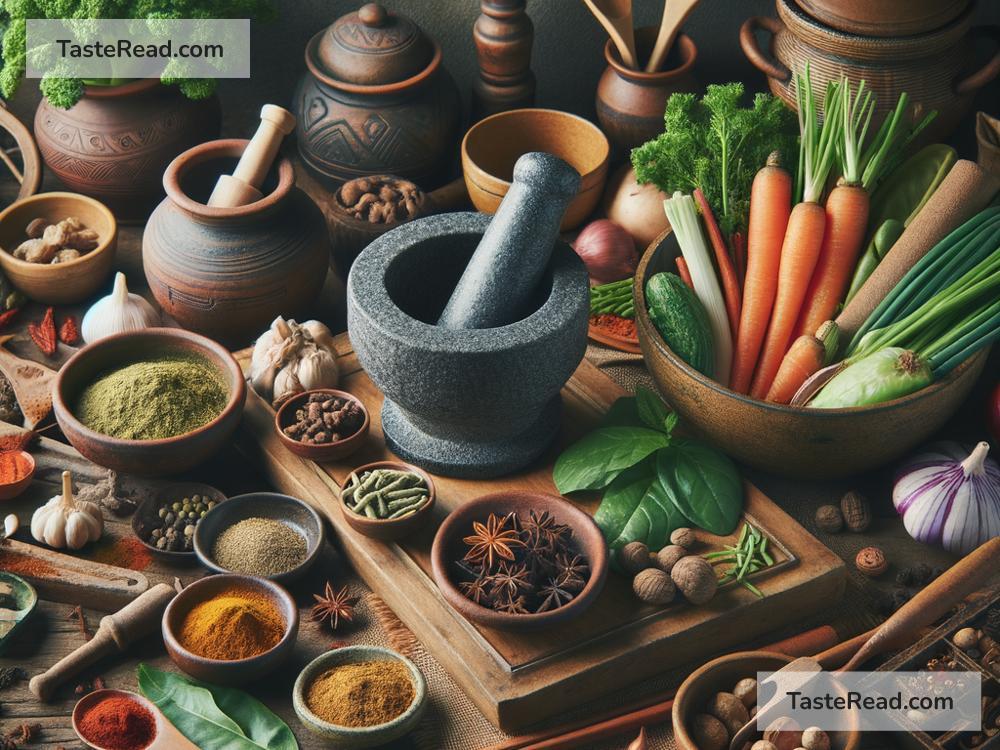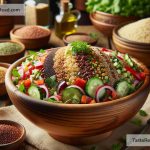Exploring Ancient Cooking Techniques in My Modern Kitchen
As someone with a passionate interest in both history and cooking, I’ve always been curious about how our ancestors managed to whip up delicious meals without the modern conveniences we take for granted today. From wood-fired ovens to clay pots, ancient cooking techniques and tools are a testament to human ingenuity. Recently, I decided to embark on a culinary adventure – to attempt recreating ancient recipes with these timeless methods right in my modern kitchen. Here’s what I discovered along the way.
Starting with the Basics: Fire
The heart of ancient cooking is fire. Before electric and gas stoves, people cooked over open flames, using wood or charcoal. In my quest to keep things authentic, I swapped my stove-top for a makeshift fire pit in my backyard. Using just a grill grate and some patience, I grilled vegetables and meat over the flames. The smokiness infused in the food was something my regular stove could never replicate. It’s a reminder of how simple, primeval techniques can elevate the flavor in such a profound way.
Exploring Earthenware
Next, I turned my attention to pottery – the quintessential ancient cooking tool. Clay pots, unglazed and fired in kilns, have been a part of human culinary practices for thousands of years. So, I got my hands on a terracotta pot. Cooking in it was a stark contrast to my sleek, non-stick pans. I quickly learned that earthenware distributes heat more evenly and retains warmth long after it’s removed from the heat source. My first attempt was a stew, simmering slowly in the pot placed directly on my modern gas stove (safety first, always!). The result was a rich, deeply flavored stew, the likes of which I had never tasted before.
Stone Age Techniques: Grinding and Pounding
A significant part of ancient cooking involved processing ingredients without modern appliances. To get a feel for this, I set aside my electric grinder and blender, replacing them with a mortar and pestle. Grinding spices and herbs by hand is no easy task, but as I pounded away, releasing the aromas, I felt a connection to countless generations past. The effort paid off in the form of more vibrant flavors; the manual grinding allowed me to release the oils in the spices more effectively than any blender could.
Baking Bread Without a Modern Oven
Bread, in some form, has been a staple in diets worldwide for millennia. Ancient peoples used a variety of ovens, but I focused on a method achievable in a contemporary kitchen: baking in a dutch oven inside my conventional oven. I used a simple sourdough recipe, utilizing natural yeast as would have been done before commercial yeasts were available. The heavy lid of the dutch oven mimics the sealed environment of ancient baking, and the resulting loaf boasted a thick, crispy crust with a soft, chewy interior – a testament to the efficacy and simplicity of old-world baking.
Fermentation: An Age-Old Preservation Method
Long before refrigerators or preservatives, fermentation was a key method for extending the life of food. Intrigued by this, I decided to make sauerkraut. With just cabbage, salt, and time, I watched as the mixture transformed, thanks to the magic of beneficial bacteria. Not only is fermented food a link to the culinary practices of the past, but it’s also incredibly healthy, packed with probiotics.
Lessons Learned
My journey into ancient cooking techniques has been enlightening in many ways. It has taught me patience and respect for the simplicity and wisdom embedded in these time-tested methods. Cooking this way slows you down and connects you with the ingredients, the process, and, ultimately, with history.
Moreover, it has been a reminder that while technology has undoubtedly made cooking quicker and more convenient, there’s something deeply satisfying about creating a meal the way our ancestors did. These ancient techniques not only add complexity and flavor to the food but also weave a narrative of human resilience, innovation, and shared history.
So, as much as I love my modern kitchen with its gadgets and gizmos, delving into the culinary past has been a delightful experience. It has broadened my culinary skills, deepened my appreciation for different cultures, and served up some deliciously historic meals. Whether it’s the primal joy of cooking over an open fire or the anticipation of breaking into a freshly baked loaf of sourdough, ancient cooking techniques have a lot to offer the modern cook.


